Ever heard of
Anty Gin? or of
casu marzu? The former is a wood ant distillate flavoured with Bulgarian juniper berries and springtime botanicals, while the latter is a traditional Sardinian sheep milk cheese which contains live maggots.
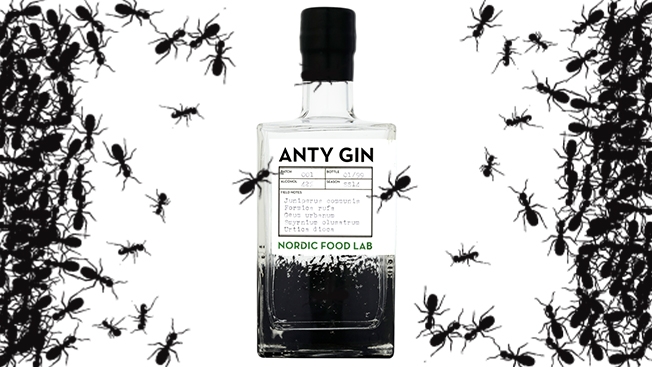
Anty Gin: eachbottle contains the “essence” of 62 ants
“Oh yuck!”, I can hear you say.
Yes, they sound disgusting, but don’t be alarmed.
They’re just two of the ingredients used by Roberto Flore, head chef at the
Nordic Food Lab (NFL) in Copenhagen, Denmark, to create extraordinary new dishes.
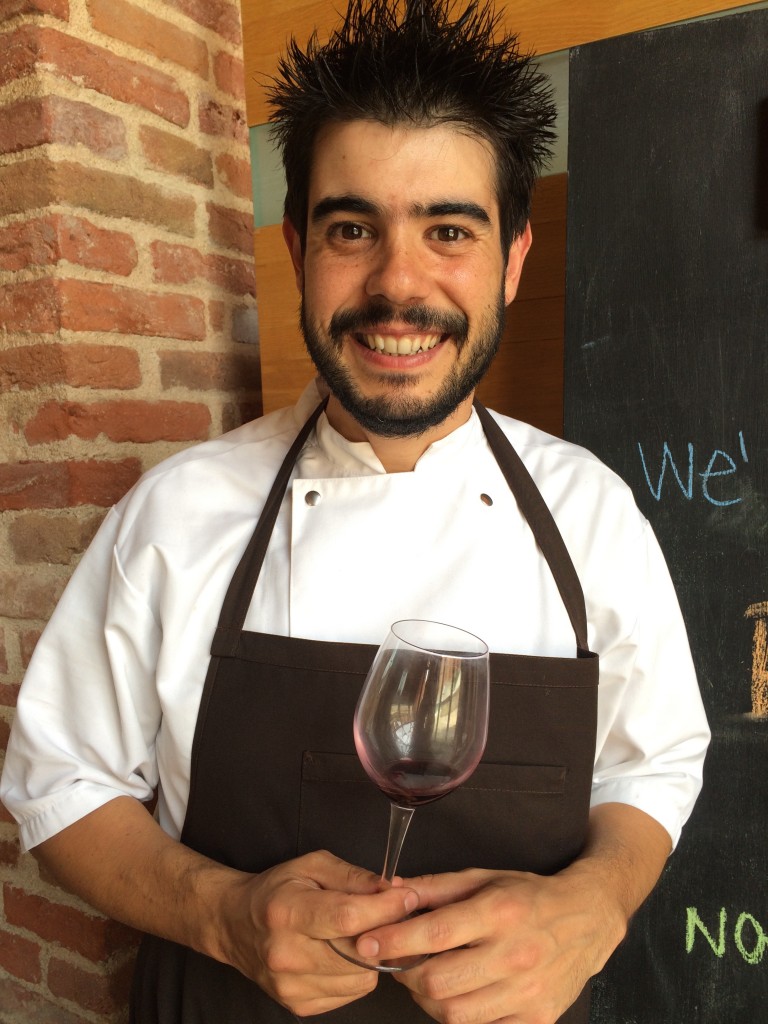
Roberto Flore, head chef at the frontier of food, Nordic Food Lab, Copenhagen
Sure, getting people to eat ants, crickets, bee larvae and other non-traditional sources of food is a mighty challenge, but recall that only 20 -30 years ago, eating raw fish was thought of as disgusting to most Westerners – and now we can’t get enough sushi and sashimi.
Finding delicious ways to make use of the flavours, textures and nutritional value of these bugs is just one of Flore’s challenges at what is arguably the most exciting
food lab in the world.
I was fortunate to be one of the students at
UNISG this week to sample some of his dishes at Le
Tavole Accademiche (the Uni mensa) where he was guest chef.
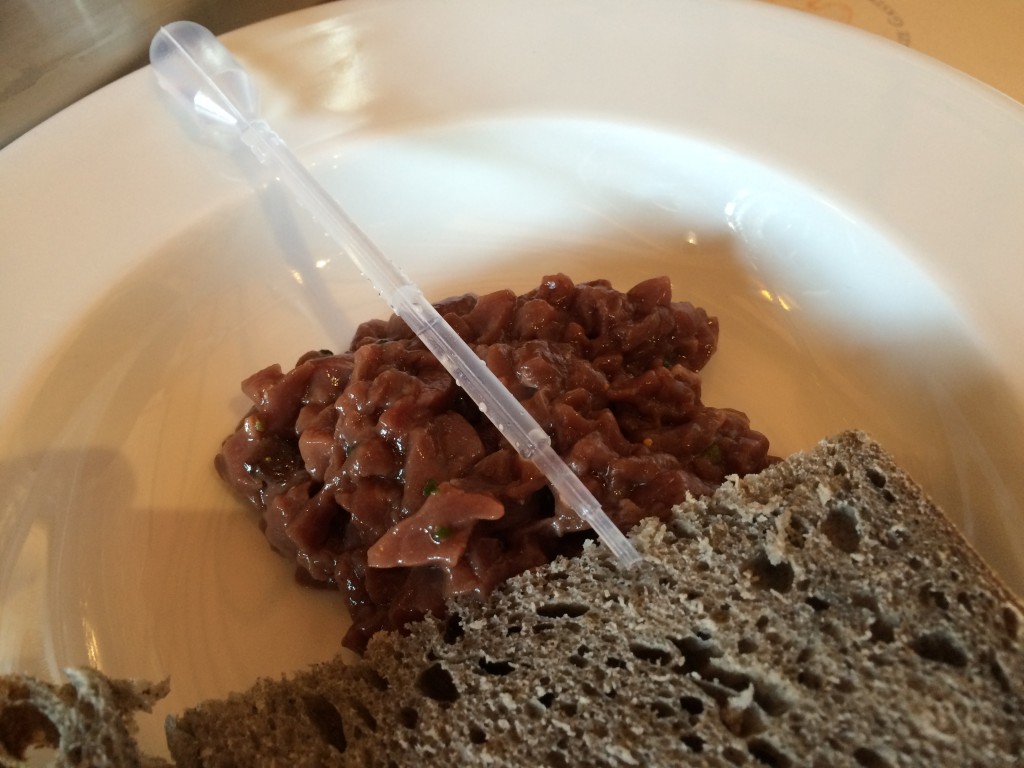
Tartare di Cuore di Pecora, Bacche di Ginepro, Anty Gin
(Tartare of Sheep Heart with vial of Anty Gin, and nigella bread)
While the
Anty Gin (a play on “antigen” which red wood ants spray on anything threatening their habitat), was the most extreme ingredient used during the week, there were plenty of others to challenge our eyes and palates.
Even the way the the
Anty Gin was served shook us out of habitual ways of seeing food presented on a plate. It was served in a plastic vial placed alongside a
Tartare di Cuore di Pecora (chopped sheep heart), the idea being to ‘drop’ the gin over the meat.
“It’s a very high distillate, in a similar category to champagne or caviar,” he told me.“The sweetness of the sheep heart goes well with the aroma of the juniper berries.
“I wanted to show how you can avoid waste and make something delicious out of a part of the animal that’s usually thrown away, and also to show how you can make tartare without using beef fillet.
“It’s not responsible to eat only a certain part of the animal.”
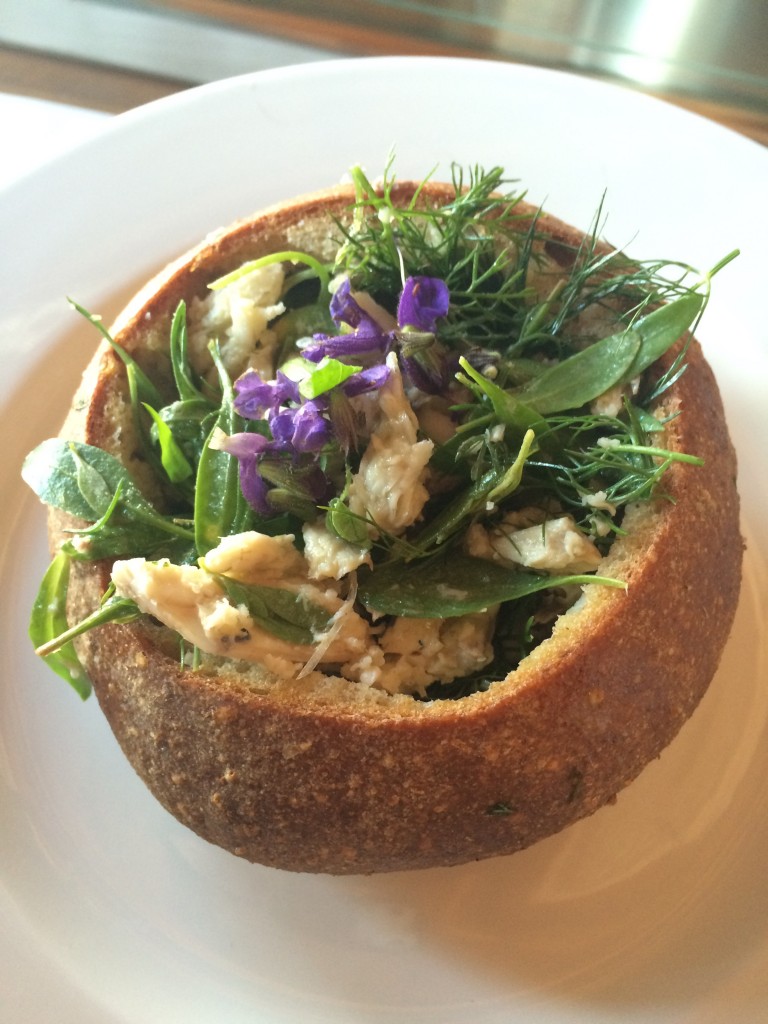
Pane Coccoi Ripieno con Merca di Cabras (typical Sardinian bread made with semolina and white flour and filled with wild herbs, asparagus vinegar and mullet): the mullet was cured following an ancient Phoenician technique and brought over by boat to mainland Italy. “The Phoenicians used to take it with them on their boats. My aim with this dish was to be authentic and traditional.”
Flore has been head chef at
NFL, a research laboratory created by legendary
Noma chef
René Redzepi, for the past 18 months. Born in 1983 in
Seneghe, a small village in western Sardinia, he grew up foraging and gathering herbs, mushrooms and wild plants.
“My first memory stretches back to when I was 4-years-old and I was in the arms of my grandmother while kneading the bread, preparing ravioli and baking sweets. I grew up inside the food system surrounded by biodiversity and studied agronomy.
“I was always helping my mother and grandmother in the kitchen,” he said. “My family used to make everything at home – the wine, olive oil, salami. We didn’t do it for money, but for sharing and sociability.
“For us, taking a gift of something home-made to someone or sharing it when we had guests was our priority.”
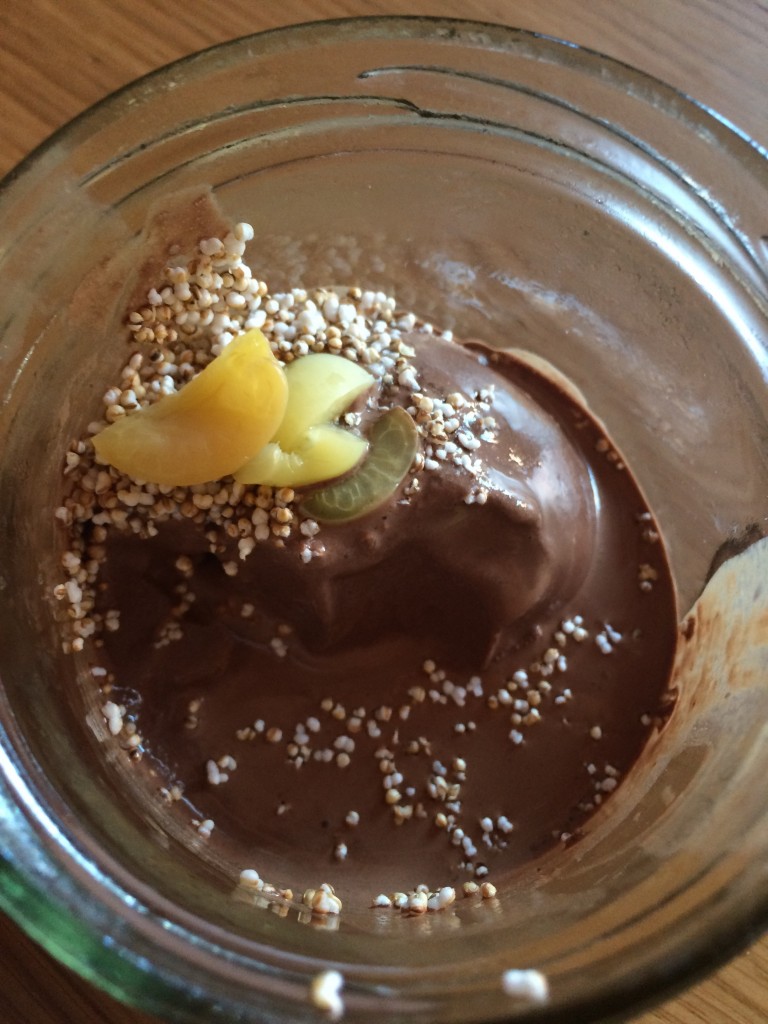
Gelato al Sangue e Cioccalato e Meringa (blood ice cream with meringue an puffed amaranth), the dessert served at the Mexican lunch. “At Mayan sacrifices, they used blood and puffed amaranth to serve to the king.”
For Flore, the home kitchen is a woman’s domain.
“It’s where I had my first imprinting. The first food you get is from a woman. If the chef world is male, their first influence is female.”
With his sparkling eyes, winning smile, infectious enthusiasm and dedication to hard work, he’s a young chef to watch out for.
Engaged to Afton Halloran, a delightful young Canadian woman doing a PhD in Copenhagen on the environmental, nutritional and socio-economic aspects of cricket farming, they met in Sardinia over
casu marzu, after she had completed work on the
2013 FAO Report on Edible Insects.
“It’s a cheesy love affair,” she said, grinning.
“At
NFL we believe eating insects is not just a good source of protein, but also important for sustainability,” he said.
“At the lab we promote diversity of taste and apply different culinary techniques from all over the world. We try to inspire people in the industry, food producers and home cooks. For example we say to producers, why do you throw away the guts of the fish when you could be using them to make
garum or fish sauce.
“And our influence can be two-way. For example in Sardinia, they are no longer honouring their tradtions. They spray wild asparagus with pesticide to get rid of it whereas now in Copenhagen, foraging for wild weeds has become a business.”
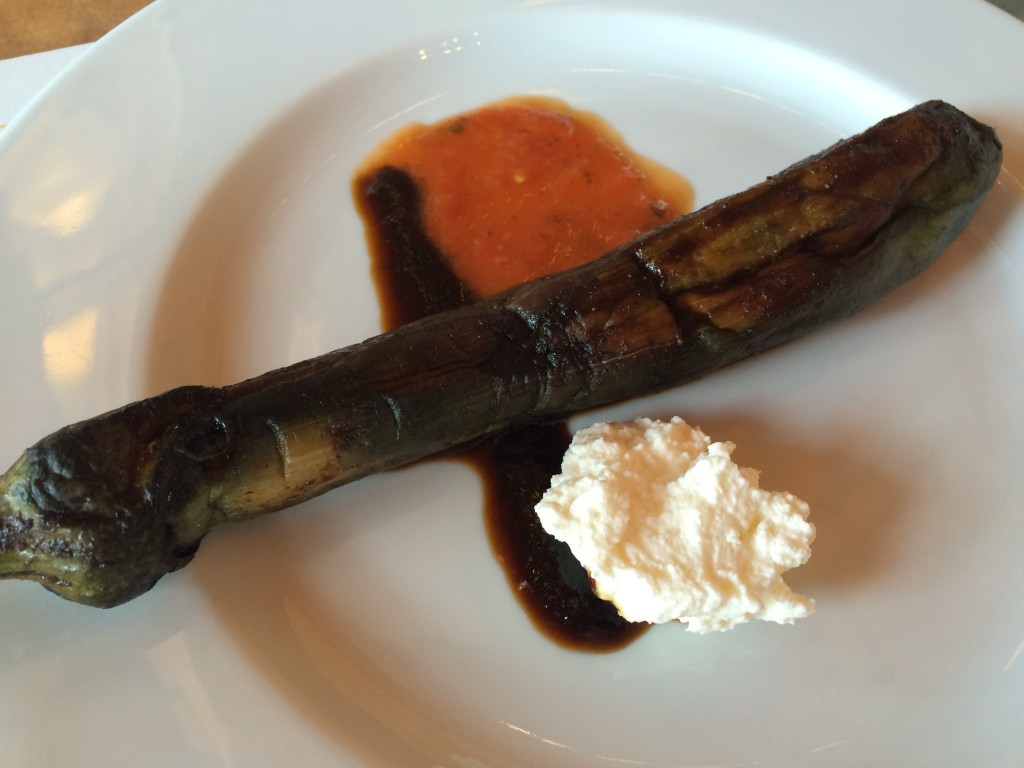
Melanzana riduzione della sua pelle (eggplant with eggplant skin reduction , tomato sauce, and fermented cream)
One of the most delicious dishes served this week was a roasted eggplant served with a dark sauce made from a reduction of the skin, a tomato sauce and fermented cream.
“We peel the eggplant and soak it in calcium hydroxide for a couple of hours. For the dark sauce, we roast the skin and reduce it with Thai-style ingredients such garlic, ginger, chilli, lemon juice, onion and soy sauce. For the tomato sauce, we use ripe tomatoes, garlic and basil, and for the cream we inoculate a mixture of cream and milk with
lactococcus lactis, ferment it for a couple of days and churn it. We stop it when it’s still foamy, just before the butter splits from the buttermilk.”
Yikes! If that sounds too much for the average home cook, remember that the
NFL is well ahead of its time, doing research on fermentation, moulds, yeast, curing and insects that most chefs haven’t even considered yet.
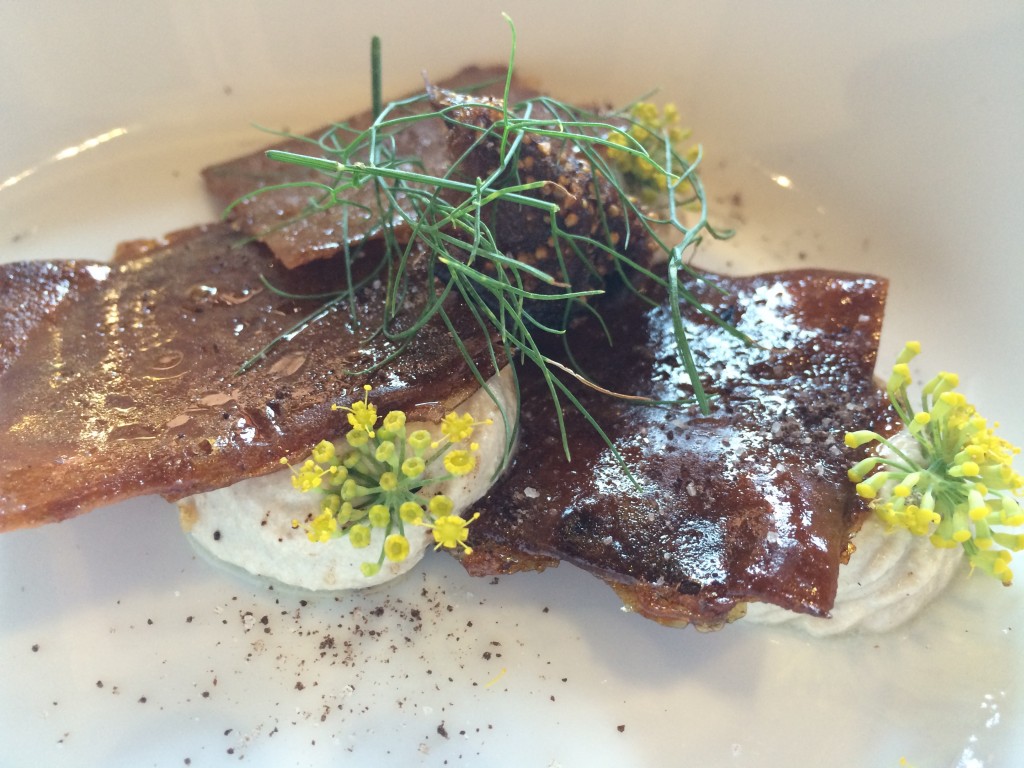
Tortino di Fagioli (a heavenly combination of fermented bean paste and sour cream, with glazed ‘pane carasau’, a traditional flatbread from Sardinia, garnished with fennel flowers)
“We don’t serve food,” says Flore. “Ours is an alchemy lab created to investigate the gastronomic potential of Scandinavian countries. We develop, catalogue, analyse and share with the public what we believe is valid and innovative.
“Our goal is to find sustainably delicious dishes with food you can find in your back food, no matter where you live.“A lot of chefs are busy promoting sustainability but they don’t know what it means.
“Over the next decade, I think restaurant kitchens will need to start collaborating with researchers to learn more about sustainable food and to be more conscious about the food they use.”
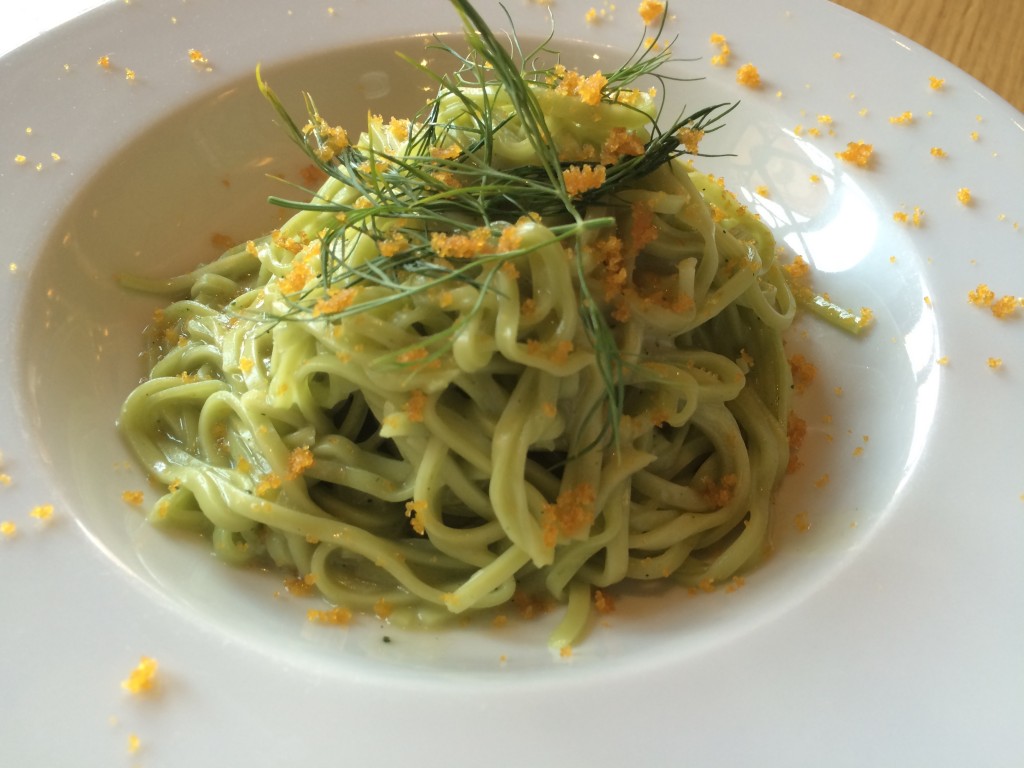
Tagliolini di Sedano Selvatico di Bottarga di Cabras (Wild Celery Tagliolini with Mullet bottarga): fresh, aromatic and delicious
For Flore, the beauty of the NFL is that it allows the possibility for people from all over the world to get together, talk and share concepts and techniques.
“Its value consists in bringing together these dialogues. It’s like a large container of ideas which we offer to the world as our common global heritage. I’m not interested to just make food, but to be part of something which is pushing content and concepts.”








